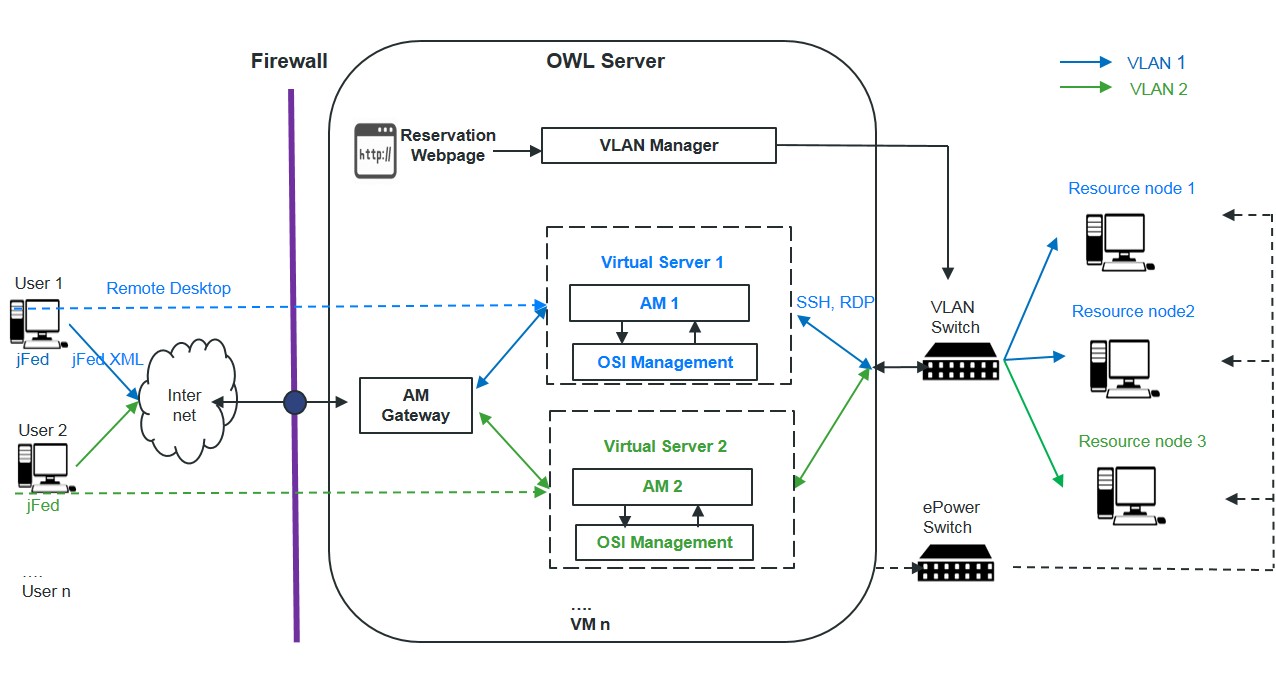Online Wireless Lab (OWL)
The "Online Wireless Lab (OWL)" testbed of the TU Dresden Vodafone Chair supports the experimental investigation of technologies for next generations of wireless communications systems.
OWL testbed enables the investigation of most aspects of cellular networks. Access and reconfiguration of relevant parts of the cellular network are granted and allow to conduct physical and higher network layer experiments.
We provide Software Defined Reconfigurable Radio Devices (USRPs), which includes a powerful FPGA and can be used for prototyping wireless communication systems. The development tool LabVIEW/LVC in combination with USRPs supports experimenting with existing protocols such as LTE and 802.11, but it also enables fast proof-of-concept for innovative communication technologies such as Generalized Frequency Division Multiplexing (GFDM).

Architecture
Testbed Users can contact us to reserve experimental resources for their experiments. A virtual experiment server including aggregate manager program, as well as a virtual LAN, which connects the reserved resources, will be allocated to the user.
The experiment server will prepare the remote access basing on the reservation information and the operation commands from jFed from the user side. Upon scheduled start time, the users can remotely access the testbed and control the setups via Remote Desktop. OWL will create a separate gateway for each experimentation group. The operating system image on each resource PC is saved for each group and can be reloaded and updated when used the next time.

SDR Platform
OWL offers a flexible and real-time test infrastructure based on software-defined radio platforms from National Instruments. In the OWL testbed, we deploy the NI LabVIEW Communications System Design Suite and the NI Software Defined Radio Reconfigurable Device such as USRP 2953R to build the reconfigurable SDR platform.
LabVIEW Communications System Design Suite
LabVIEW Communications System Design Suite (LVC) is a development environment using a graphical programming language. It allows the users’ designs to be easily deployed in both host processors and FPGAs. Together with the NI software defined radio hardware, it simplifies the prototyping of advanced wireless communication systems. The LVC in our testbed includes LTE and 802.11 Application Frameworks, which can be used as a reference design of PHY layer.

software-defined radio devices
Universal Software Radio Peripheral (USRP), for example USRP 2953R, is the basic SDR device in our testbed. USRP 2953 RIO is built on the Labview reconfigurable I/O (RIO) and USRP architectures. It includes a powerful FPGA for advanced DSP that is programmable with the LabVIEW FPGA Module. It offers center frequencies from 1.2GHz to 6 GHz, with the Bandwidth of 40MHz per channel, and it includes 2x2 MIMO RF transceivers with an on-board Kintex 7 FPGA.USRP 2953R is included in the Multi-Rat setup in our lab.
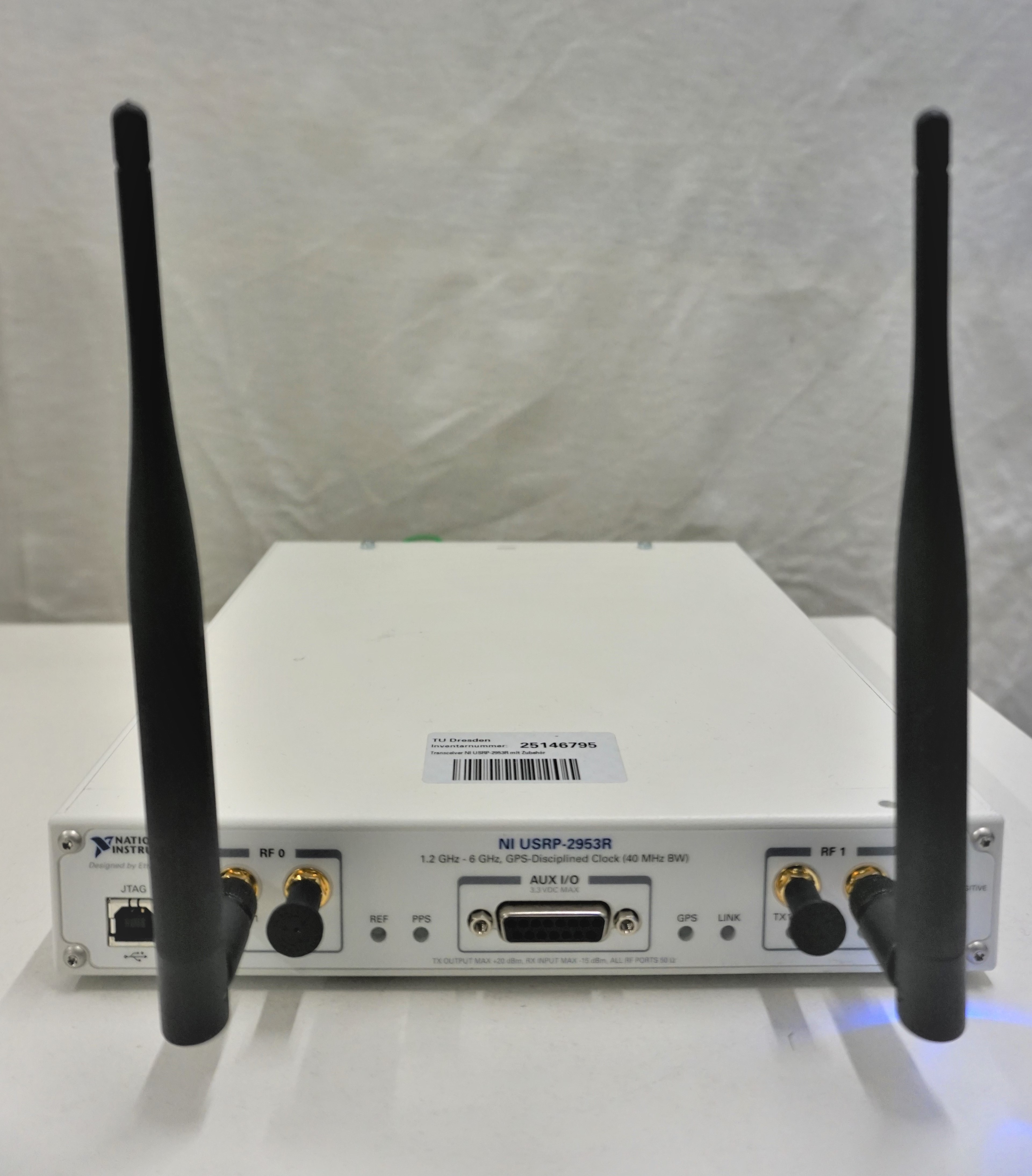
In our indoor experimenatal nodes, we depoloy USRP 2944 RIO and USRP 2974. USRP 2944 Rio has center frequencies from 10MHz to 6 GHz, with the Bandwidth of 160MHz per channel. USRP 2974 is a combination of USRP 2944 and a on board controller PC with Intel i7 processer.
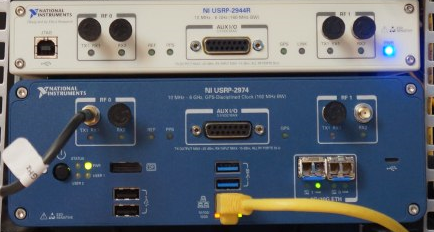
experimental resources
A basic idea of our testbed is, to take the devices out of the lab and build a more realistic test environment for the wireless communication system on the campus. Our testbed allows real-time experiments that benefit from having low-latency and high throughput access to FPGAs. Through a variety of software defined radio nodes, it is possible to target realistic scenarios beyond the typical lab environment.
indoor access point
We built up metal boxes containing SDR devices and mount the boxes in our chair as indoor access points. In each box we deploy two universal software radio peripherals from national instruments. One USRP 2974 is a remotly accessble SDR controller of each box. We connected an additional USRP 2944 to extend the capability of the node. We designed our own power supply box and RF component. The output of the usrp is connected to a power amplifier to reach a 0.5 Watt output power. For indoor experimental nodes we deploy 4 by 4 MIMO antennas. An additional USRP mini is used for the channel sounding. We deploy one 10Gbit optical switch in each box.
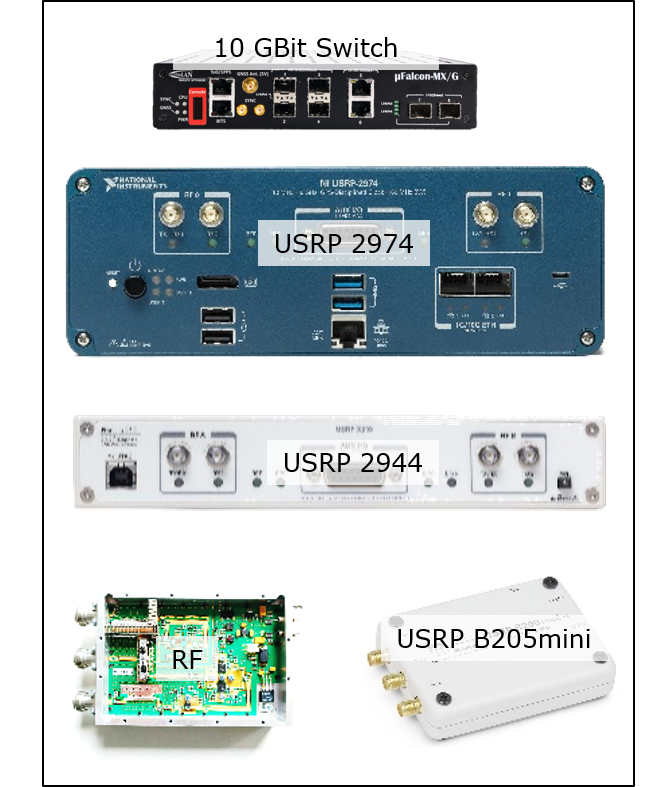
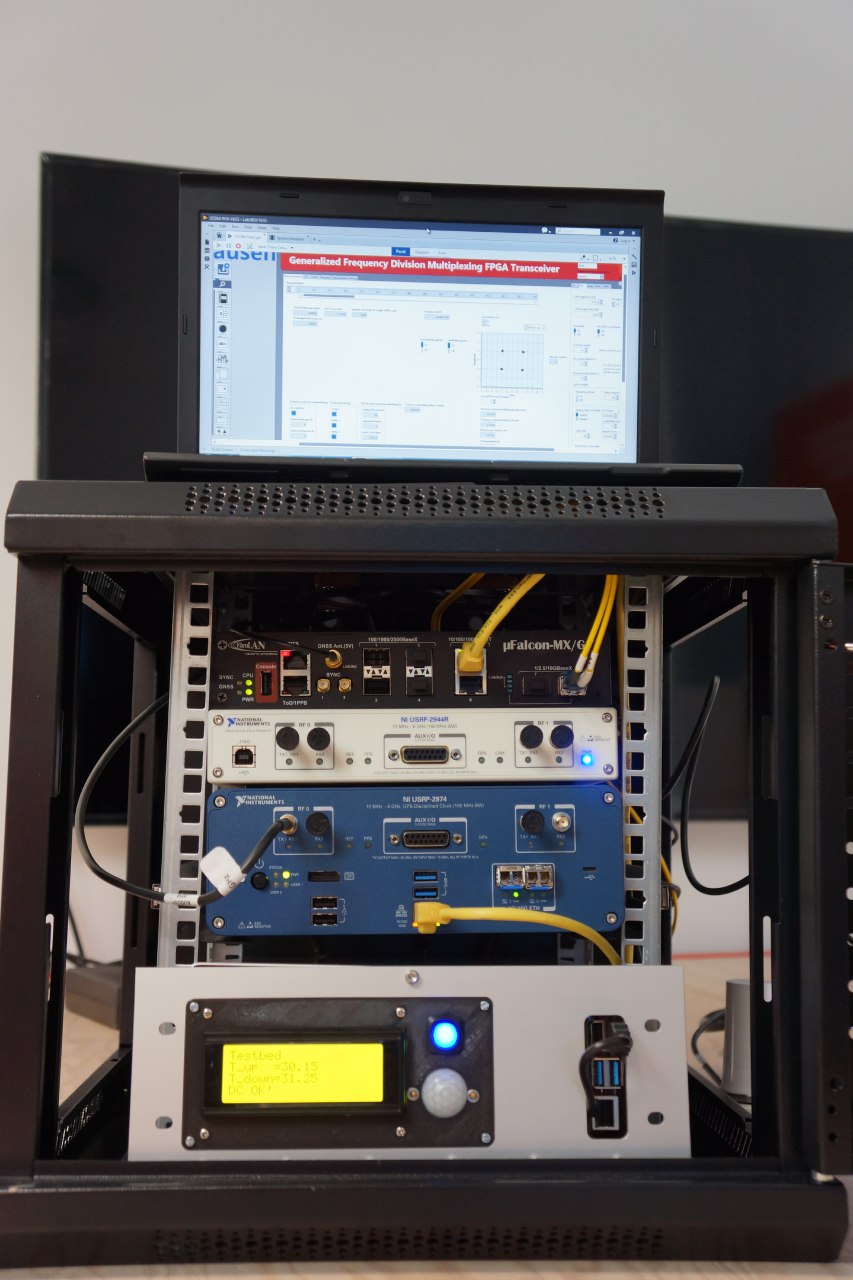
RF Capabilities:
-
4 x Ettus UBX Daughterboards
- Frequency range: 10 MHz to 6 GHz
- Bandwidth: 160 MHz
- 26-28 GHz possible
- Antenna: 4x4 MIMO
- Output power: 0.5 W
- Spectrum sensing device
Processing Capabilities:
- CPU: Intel i7, 16 GB RAM, 256 GB SSD
- FPGA: 2 x Xilinx Kintex 7-410T
Testbed Layout
Currently we have mounted 6 this kind of boxes in our hallway as indoor access point. We are also working on outdoor basestation using similar setup. Besides, OWL testbed also includes 4 other so called multi-RAT experimental nodes in lab room
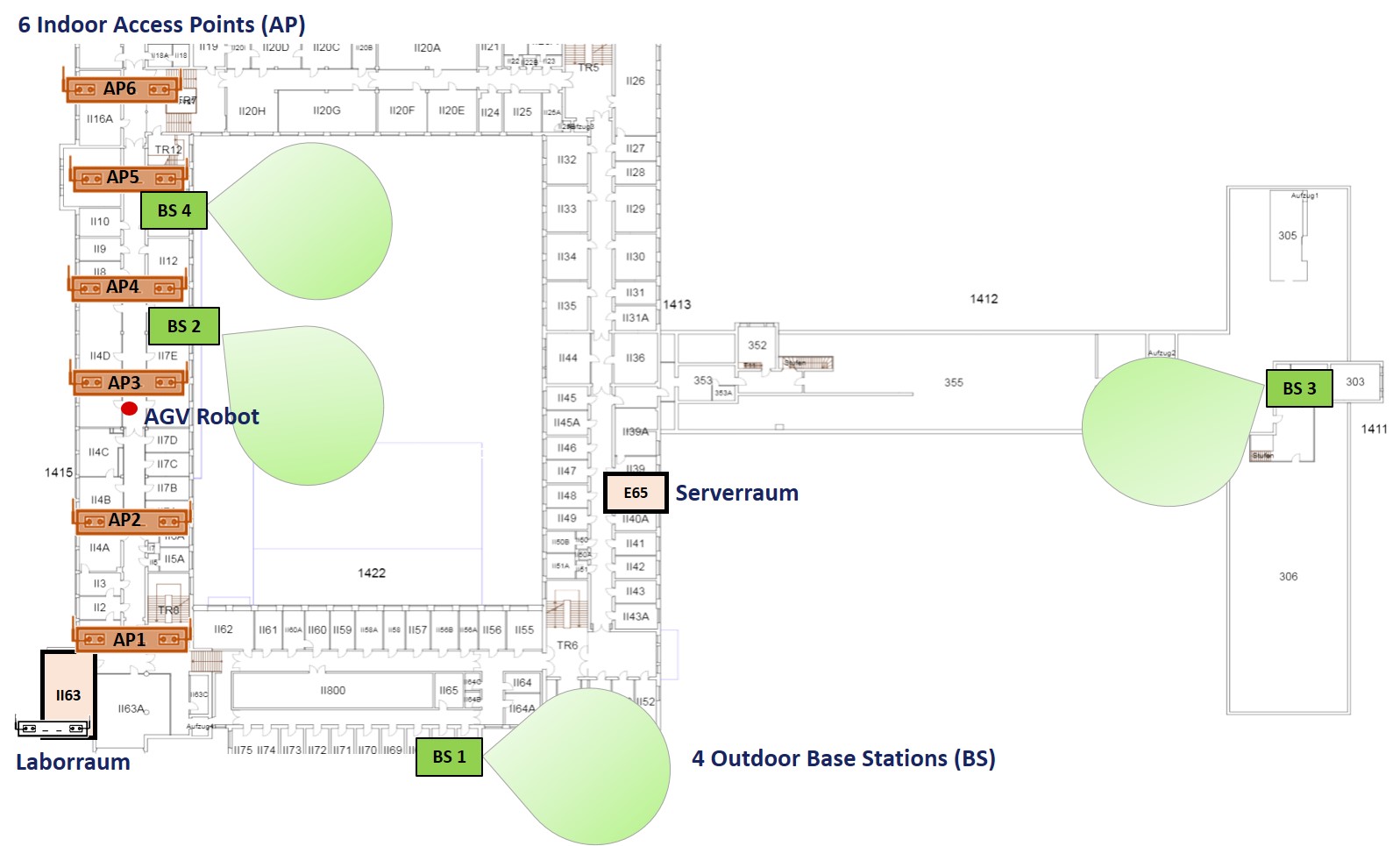
Multi-Rat Setup
Our testbed offers a software-defined radio platform witch enables real-time experimentation of LTE and WiFi systems. One Multi-Rat node is composed of one Windows Controller with Labview communication System design suit, one realtime Linux controller, as well as 2 NI USRPs. The OWL testbed is extendable. Currently we offer four kinds of experiment units:
- The setup can be listed as:
Available Hardware:- NI PXIe 1082 with controller NI PXIe-8133, or with controller NI PXIe-8880
- NI USRO RIO 2953R, NI USRP RIO 2954R
- Antenna VERT2450, SMA cables
- WIN7, NI Realtime Linux
- NI LabVIEW Communications System Design Suite
- 802.11 Application Framework
- LTE Application Framework
- Matlab R2016a
- ns-3
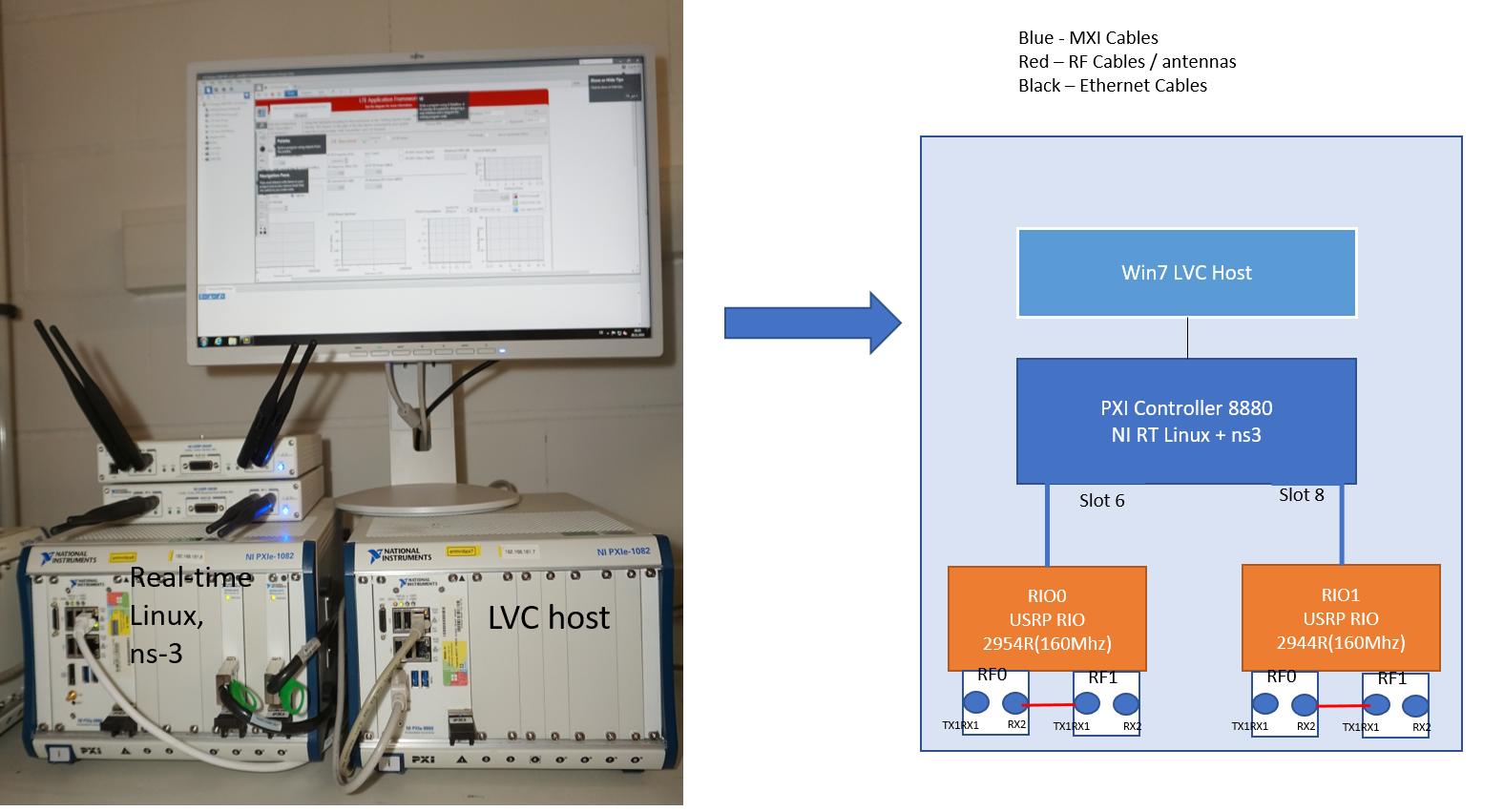
In order to enable the prototyping of LTE and 802.11 protocol in multi-nodes szenario, we combined build 4 MultiRat platforms.
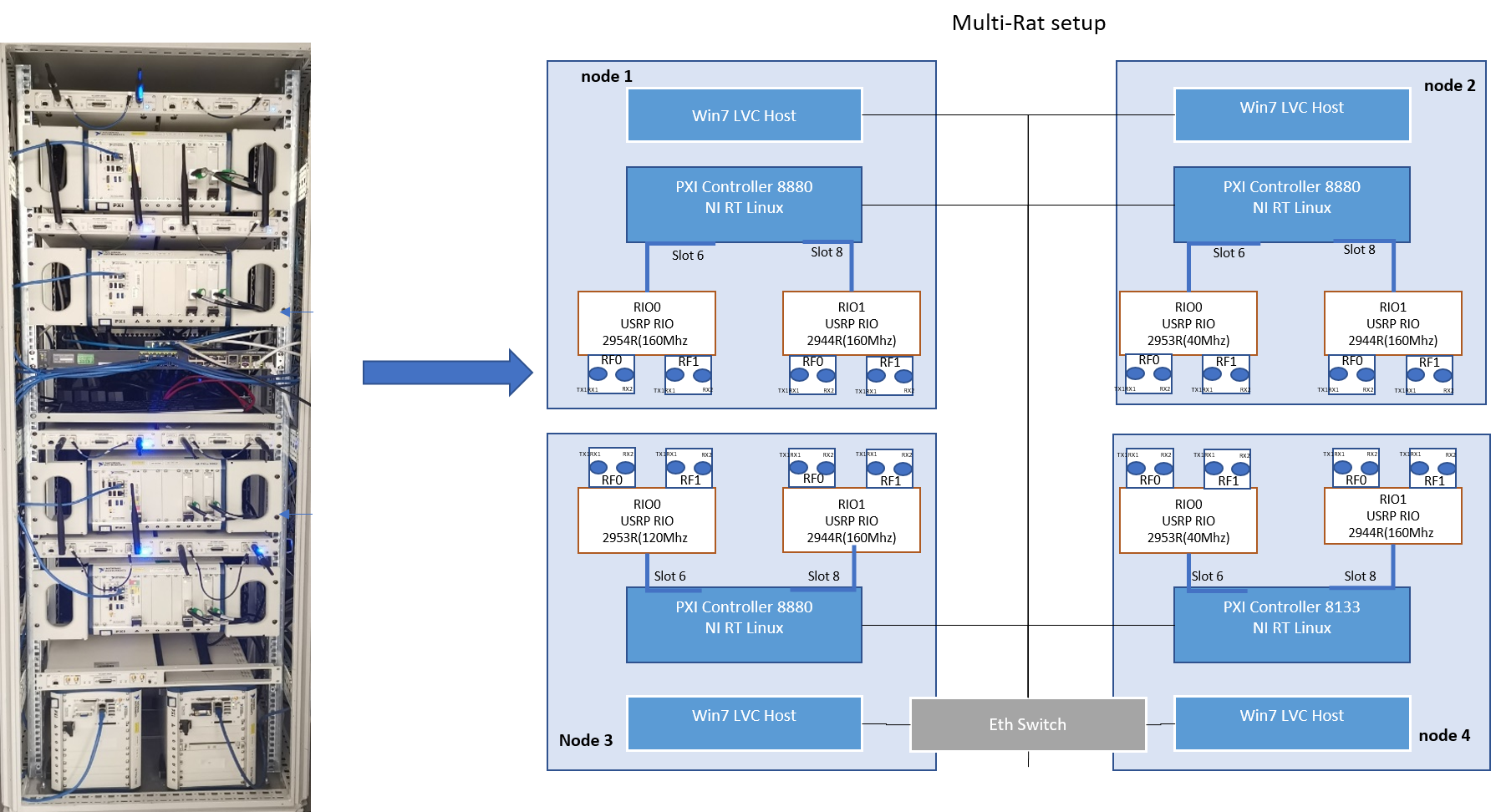
Network
All the experimental nodes in the testbed are connected via optical fiber. We deployed 10 Gbit optical switches, which can generate a reference frequency and also do time synchronization, so the connected hardware can be synchronized to GPS time with the accuracy up to 5 nano seconds via Precision Time Protocol. We have two 10 Gbs network accesses between each node and the network. We connected the lab over Gbs optical network to our server room.

Setting up an Experiment
The FED4FIRE users can check the availability of the resources on the reservation webpage, and reserve the required experimentation resources when they are available. This will allow the Aggregate Manager to get the information of the reservation. After this reservation, the users can setup an experiment using jFed. The request from jFed will be accepted and executed by the AM to allocate, initiate and start the experimentation units. Then the user can try out their experiment on top of our hardware using SSH or via Remote Desktop. After the reserved time expires, the AM will save the OS Image for the current user group and free the experimentation resources.
You can find more details in our online tutorial and our youtube channel
